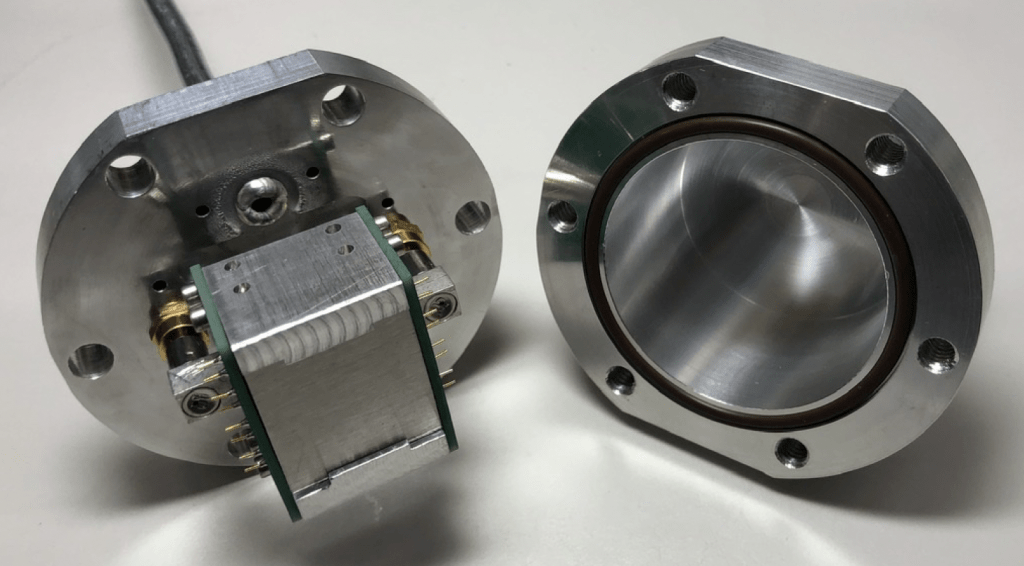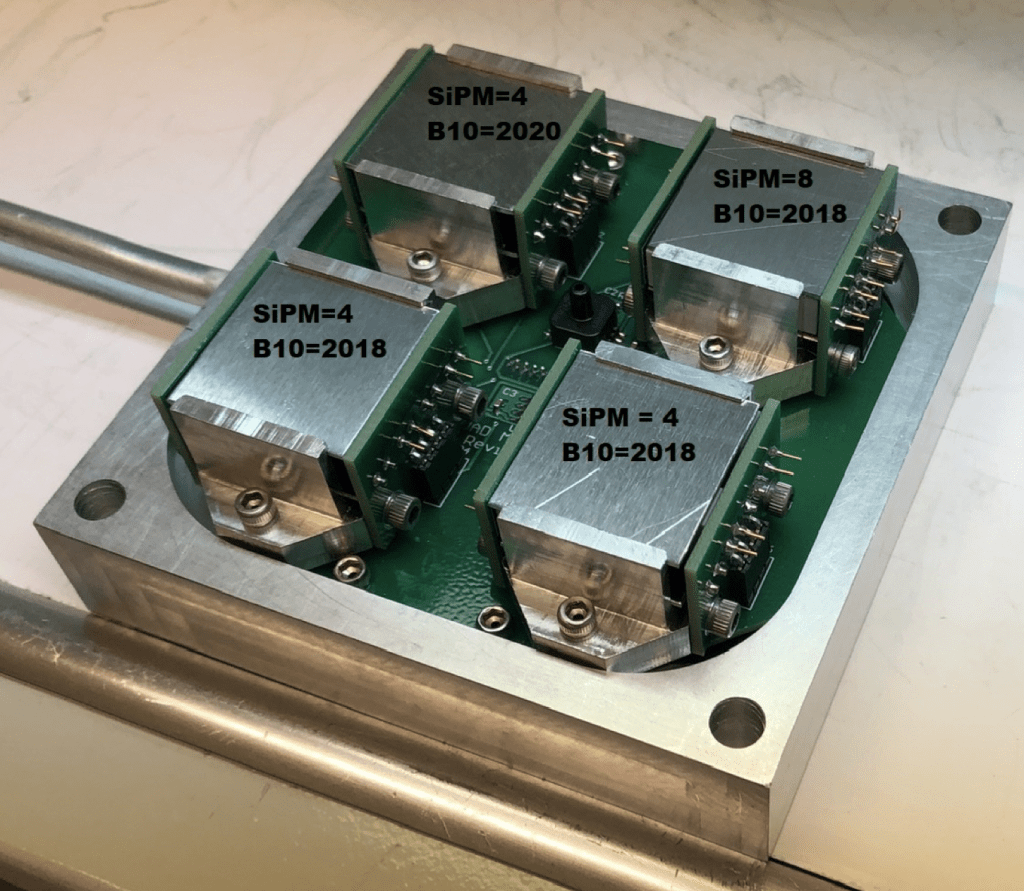Free neutrons have a lifetime of 12 minutes and, though they are present in nearly all matter, are especially difficult to detect because they lack charge. The few nuclei with which they do interact, 3He, 10B, and 6Li, are the bases of almost all low energy neutron detectors. The detector in development at the University of Maryland is uses the reaction, n + 10B ⟶ α + 7Li + 2.8 MeV, that takes place in a closed cell filled with xenon gas at one atmosphere pressure. The 10B is in the form of micron films deposited on aluminum or silicon substrates.
The energetic reaction products (α and 7Li) produce scintillations centered at 170 nm in the xenon and are recorded by silicon photomultipliers. The photo below shows the basic detector (left) with a 10B coated plate, front, and silicon photomultipliers on the side. On the right is the cap of the hermetically sealed chamber filled with xenon at one atmosphere pressure. The 10B coated plate is 25mm x 25mm.
The detector shown below is a four-cell array of 10B cells. Each of the cells in the array can be fitted with attachments to modify their field of view and energy response. Applications include the detection, location, and identification of remote neutron sources. A 24-cell array of this type is the subject of a proposal to NASA for the detection of neutrons on the surface of the Moon.


